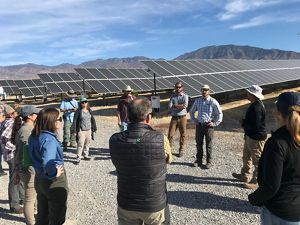Support a Clean Energy Future
We have no time to waste. Join us in calling for a low-carbon future.
Sign the PledgeElectric vehicles (EVs) are growing in popularity in the United States and throughout the world, as battery range increases, charging infrastructure expands and automakers unveil a growing variety of car and light truck models. According to the International Energy Association, the number of new EV car registrations nearly doubled over one year in 2018, with China leading the way, followed by Europe and then the U.S. China, especially, is taking an aggressive approach to EV manufacturing, producing 1.2 million EVs in 2019, compared to 325,000 in the U.S.
Is your idea of an electric car stuck in 2010? The EV world has changed a lot in the past decade, so here’s a look at five things you thought you understood about EVs, and might be surprised to learn you have wrong:
1) I thought electric cars are too expensive.
It’s true that most all-electric cars have a base sticker price between $30,000 and $40,000, comparable to luxury performance vehicles like an Audi A4 or a BMW 330i. That price may be reduced by federal, state, and local tax credits or other incentives, which can shave thousands from the final price tag (and help cover the cost of installing home recharging stations). Go beyond the purchase price and you’ll find that electric vehicles are less expensive than gas-powered cars, according to research by Consumer Reports. CR says that once all costs of ownership are considered—including such factors as purchase price, fueling costs, maintenance, and resale—owning an electric vehicle will save the typical driver $6,000 to $10,000 over the life of the vehicle, compared to a comparable gas-powered model.
2) I thought EVs are too small. I need something that can haul cargo.
Need a pickup truck? They’re on the way. According to Car & Driver, several electric pickup models will be rolling off assembly lines in the coming months, from well-established automakers like Ford and Chevrolet as well as some promising new startups like Rivian. And we’re talking about some workhorse vehicles—Ford says the electric version of its popular F-150 pickup will be the most powerful F-150 ever, with more than 450 horsepower and 510 pound-feet of torque.
3) I thought electric vehicles use so much energy to produce, that they’re not actually better for the climate.
It’s true that manufacturing an EV can use more energy than a conventional car, largely due to the manufacture of lithium ion batteries. More than a third of the carbon pollution created by an EV over its lifetime does come from its manufacture. However, if you look at the entire life cycle of the vehicle, an electric car ultimately creates fewer emissions than its gas-powered counterpart. A recent analysis (subscription required) in the Wall Street Journal compared the life cycle of a Tesla Model 3 to a Toyota Rav 4. Although more emissions are produced by manufacturing the Tesla, by 20,600 miles (just getting broken in) greenhouse gas emissions from building and driving the two cars are roughly the same. By the time the two odometers have clocked 100,000 miles, lifetime emissions of the RAV4 are 77 percent more than the Model 3. Those numbers will only continue to improve as more electricity sources switch from fossil fuels to renewable energy (which has other benefits for EVs—see #4 below). In any event, electric cars don’t have tailpipes and don’t spew the smog-forming pollution that make life miserable in congested cities and which is the largest source of greenhouse gas emissions in the United States.
4) I thought EVs are no better for the environment because the electricity used to run them comes from fossil fuels.
The climate change emissions created by driving on electricity depend on where you live (see map) and your electricity source, but on average, an EV driving on electricity in the U.S. today produces emissions equivalent to a conventional gasoline car that gets 80 miles per gallon—which is far better mileage than any gasoline-powered car available. That’s based on a 2018 study by the Union of Concerned Scientists. As the U.S. continues to increase generation of clean electricity, electric vehicles become an even cleaner option. A country serious about fighting climate change will work diligently to reduce carbon emissions from both cars and power plants, because transportation and electricity production are the two greatest sources of greenhouse gas, and we need to be addressing both.
5) I thought there are not enough EV charging stations available to make EVs a practical choice for consumers.
There’s no doubt—we need more infrastructure to keep our electric cars and trucks on the road when we have places to go. The US. Department of Energy reports more than 42,000 charging stations in the U.S. in 2019, providing nearly 103,000 connections. The availability varies by state, but the numbers are rapidly increasing, in the U.S. and globally. According to the IEA, the number of charging points around the world was estimated to be approximately 5.2 million, an increase of 44 percent from the previous year. If you want to take a cross-country road trip in your electric vehicle, you can do it – and it gets easier every year. Companies that manage charging networks are making it a priority to create easy to use, fast charging stations across the country. The availability of charging stations is less important for drivers who mostly stay close to home. Most EV owners can charge their battery at home overnight, and as the editors of Car and Driver note, “Even the shortest-range EV can manage more than 7 hours of slogging through city traffic.”
Global Insights
Check out our latest thinking and real-world solutions to some of the most complex challenges facing people and the planet today.





